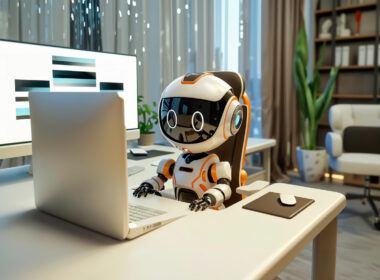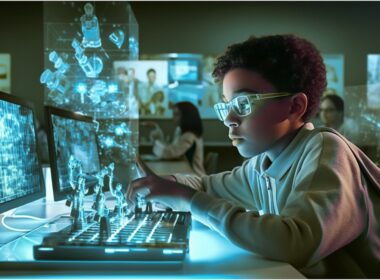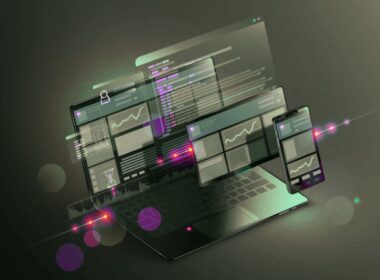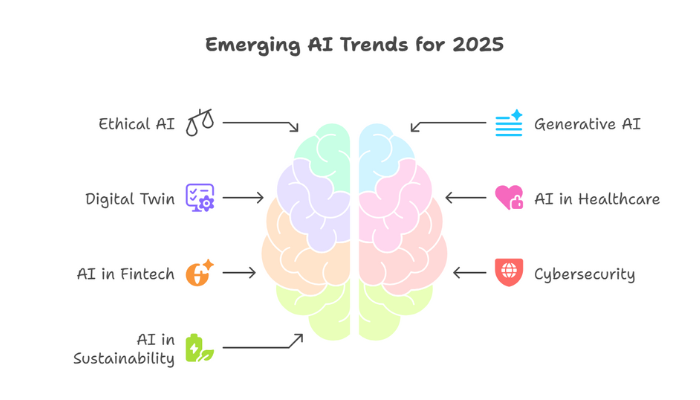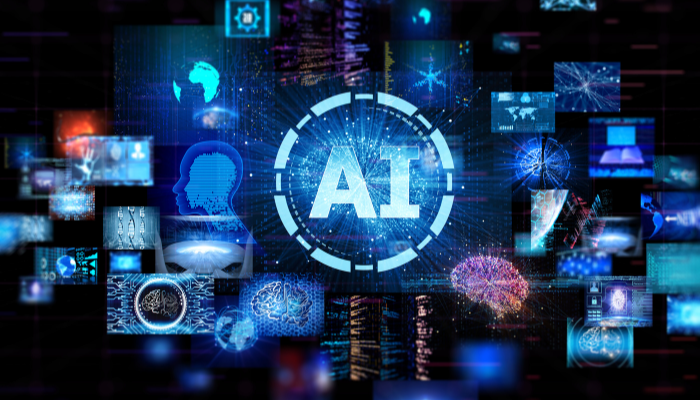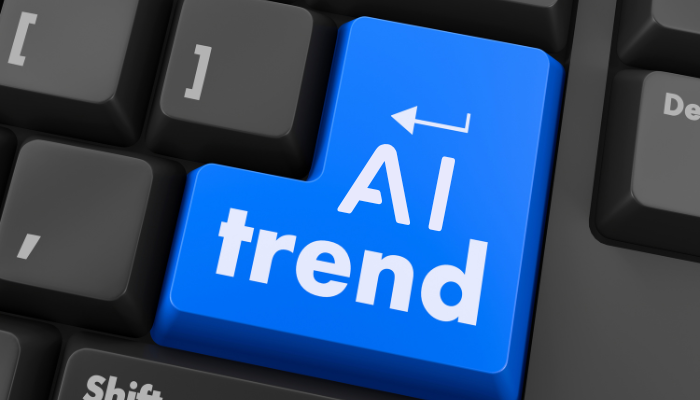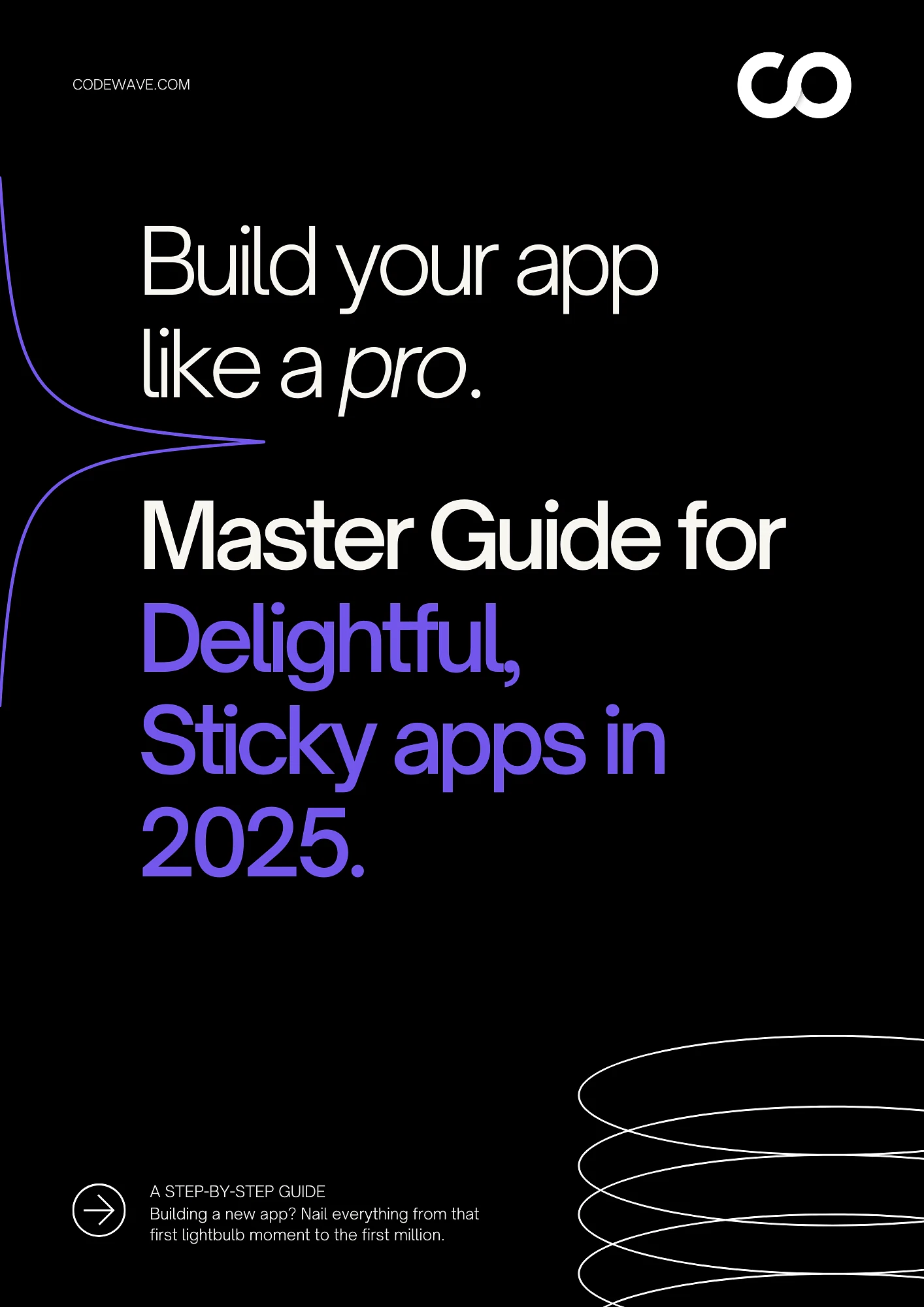AI is writing songs, creating art, diagnosing diseases, and even designing new materials. It’s no longer a futuristic fantasy; it’s transforming our world today.
But with so much happening so fast, how can businesses keep up?
What will the AI landscape look like in 2025?
As we move forward, we can expect to see significant advancements in areas like machine learning, natural language processing, and computer vision. But which trends will have the most profound impact on businesses?
In this blog post, we’ll cut through the hype and explore the key AI trends poised to reshape industries in 2025, offering practical insights and actionable advice.
Key AI Trends to Watch in 2025
1. Generative AI Advancements
Generative AI is no longer just about creating text or generating images — it’s evolving into a powerhouse for businesses, creators, and developers alike. From crafting realistic videos to generating complex code, its applications are growing fast.
Use Cases to Watch
- Content Creation: Companies are using generative AI to write marketing copy, generate social media posts, and even create video scripts.
- Product Design: AI models can generate multiple design concepts in seconds, reducing the time spent in iterative design processes.
- Customer Support: AI chatbots with advanced conversational abilities can provide more human-like interactions, improving customer experience.
Recent Development
A recent McKinsey report estimates that generative AI could add up to $4.4 trillion annually to the global economy. Industries like software, media, and finance are already leading the way in adoption.
But it’s not without challenges. From ethical concerns about deepfakes to managing copyright issues, businesses will need to approach its use responsibly.
Next up, we’ll explore how Edge AI is making real-time decision-making possible right on your devices.
2. Edge AI for Real-Time Decision-Making
Edge AI brings the power of artificial intelligence directly to devices like smartphones, sensors, and industrial machines. Instead of sending data to centralized servers, AI processes it locally. This makes real-time decision-making faster and more efficient.
Use Cases to Watch
- Manufacturing: Predictive maintenance systems analyze data from machinery sensors to detect issues before they cause downtime.
- Healthcare: Wearables equipped with Edge AI can monitor patient vitals and send alerts for early detection of abnormalities.
- Smart Cities: Traffic management systems use AI to analyze real-time data from cameras and sensors to reduce congestion.
Recent Development
According to Gartner, by 2025, 75% of enterprise data will be processed at the edge rather than in traditional data centers. This shift will reduce latency and enhance security, especially in industries requiring instant decisions.
3. Multi-Modal AI
Multi-Modal AI refers to the ability of artificial intelligence systems to interact with humans using multiple modes of communication, such as speech, text, vision, and gesture. This technology has the potential to revolutionize the way we interact with machines, making it more natural and intuitive.
Use Cases to Watch
- Virtual Assistants: Multi-Modal AI can be used to create virtual assistants that can understand and respond to voice commands, text messages, and gestures.
- Smart Homes: Multi-Modal AI can be used to control smart home devices using voice commands, gestures, and facial recognition.
- Healthcare: In healthcare, it can be used to create personalized healthcare assistants that can understand and respond to patient needs using multiple modes of communication.
- Education: Multi-Modal AI can be used to create interactive learning platforms that can adapt to individual learning styles and abilities.
A recent report found that Multi-Modal AI is a growing field, projected to reach USD 4.5 billion by 2028. By leveraging Multi-Modal AI, businesses and organizations can create more natural and intuitive interfaces, improving user experience and increasing productivity.
Next, we’ll look at how AI-Driven Automation is streamlining operations across industries. Let me know if you’d like any changes or further details on Edge AI!
4. AI-Driven Automation
So, what is AI-Driven Automation? Simply put, it’s using artificial intelligence to automate tasks and processes. This can be anything from data entry to customer service, and even complex tasks like manufacturing and supply chain management.
Use Cases to Watch
- Manufacturing: AI-powered robots can build things faster and more accurately than humans.
- Customer Service: Chatbots can answer customer questions and help with simple issues, freeing up human agents for more complex problems.
- Finance: AI can help with tasks like accounting and compliance, reducing errors and increasing productivity.
- Supply Chain Management: AI can optimize logistics, predict demand, and automate inventory management, saving time and money.
What’s New? A recent report found that AI-Driven Automation can increase productivity by up to 40% and reduce costs by up to 30%. This is a big deal, and industries like manufacturing, healthcare, and finance are already seeing the benefits.
The Catch
Of course, there are some challenges to consider. For example, automation might replace some jobs, and we’ll need to make sure workers have the skills they need to work with AI. But overall, AI-Driven Automation has the potential to make a big impact and make our lives easier.
5. Digital Twin
A Digital Twin is a virtual replica of a physical object, system, or process. It is a digital representation of the physical world, and it can be used to simulate, predict, and optimize the behavior of complex systems.
Use Cases to Watch
- Industrial Automation: Digital Twin can be used to create virtual replicas of industrial equipment, enabling predictive maintenance and optimizing production processes.
- Smart Cities: Digital Twin can be used to create virtual replicas of cities, enabling urban planners to simulate and optimize traffic flow, energy consumption, and waste management.
- Healthcare: Digital Twin can be used to create virtual replicas of patients, enabling personalized medicine and improving healthcare outcomes.
- Aerospace: Digital Twin can be used to create virtual replicas of aircraft, enabling real-time monitoring and optimization of flight performance.
According to a report, Digital Twin can improve predictive maintenance by up to 30%. This is a significant improvement, and one that can have a major impact on industries such as industrial automation and aerospace.
Next, we’ll talk about Explainable AI (XAI) and how it’s making AI decision-making more transparent and trustworthy.
Explainable AI (XAI)
So, you’re using AI to make decisions, but have you ever wondered how it’s actually making those decisions? That’s where Explainable AI (XAI) comes in. XAI is all about making AI decision-making more transparent and understandable.
Use Cases to Watch
- Healthcare: XAI can help doctors understand how AI is diagnosing diseases, so they can make more informed decisions.
- Finance: XAI can help banks understand how AI is making lending decisions, so they can reduce risk and improve customer satisfaction.
- Autonomous Vehicles: XAI can help us understand how self-driving cars are making decisions, so we can improve safety and reduce accidents.
A recent study found that XAI can increase trust in AI decision-making by up to 50%. This is a big deal, because trust is a major hurdle for AI adoption. By making AI more transparent and understandable, XAI can help businesses and organizations build trust with their customers and stakeholders.
Next, we’ll talk about AI for Cybersecurity and how it’s helping to protect businesses and organizations from cyber threats.
AI for Cyber Security
Cybersecurity is a major concern for businesses and organizations of all sizes. With the rise of digital technologies, the risk of cyber attacks has increased exponentially.
That’s where AI for Cybersecurity comes in. AI-powered cybersecurity systems can help detect and prevent cyber threats in real-time, reducing the risk of data breaches and other cyber attacks.
Use Cases to Watch
- Threat Detection: AI-powered systems can analyze vast amounts of data to detect potential threats, such as malware, phishing attacks, and ransomware.
- Incident Response: AI can help respond to cyber attacks in real-time, reducing the impact of the attack and minimizing downtime.
- Vulnerability Management: AI can help identify vulnerabilities in systems and applications, allowing businesses to patch them before they can be exploited.
- Compliance: AI can help businesses comply with regulatory requirements, such as GDPR and HIPAA, by monitoring and analyzing data to ensure it is secure and compliant.
A recent report found that AI-powered cybersecurity systems can detect threats up to 50% faster than traditional systems. This is a significant improvement, as every minute counts when it comes to responding to cyber attacks.
Next, we’ll talk about AI for Sustainability and how it’s helping businesses reduce their environmental impact.
AI for Sustainability
As concern for the environment grows, businesses are under increasing pressure to reduce their environmental impact. AI for Sustainability is a rapidly emerging field that uses artificial intelligence to help businesses reduce their carbon footprint, conserve resources, and promote sustainable practices.
Use Cases to Watch
- Energy Efficiency: AI can optimize energy consumption in buildings and industries, reducing waste and lowering emissions.
- Supply Chain Optimization: AI can help businesses optimize their supply chains, reducing transportation emissions and promoting sustainable sourcing.
- Waste Management: AI can help businesses reduce waste by optimizing production processes, predicting demand, and improving recycling rates.
- Climate Modeling: AI can help scientists and policymakers understand and predict the impacts of climate change, informing strategies for mitigation and adaptation.
A recent report found that AI for Sustainability can help businesses reduce their carbon footprint by up to 20%. This is a significant reduction, and one that can have a major impact on the environment.
Next, we’ll talk about AI for Social Good and how it’s being used to drive positive social change.
7. AI for Social Good
AI for Social Good is a rapidly emerging field that uses artificial intelligence to drive positive social change. From improving healthcare outcomes to promoting education and reducing inequality, AI for Social Good has the potential to make a major impact on society.
Use Cases to Watch
- Healthcare: AI can help improve healthcare outcomes by analyzing medical images, predicting patient outcomes, and optimizing treatment plans.
- Education: AI can help improve education outcomes by personalizing learning, predicting student outcomes, and optimizing educational resources.
- Inequality: AI can help reduce inequality by analyzing and addressing biases in hiring, promoting diversity and inclusion, and optimizing social services.
- Disaster Response: AI can help respond to natural disasters by analyzing damage, predicting needs, and optimizing relief efforts.
A recent report found that AI for Social Good can help improve healthcare outcomes by up to 30%. This is a significant improvement, and one that can have a major impact on society.
Having explored the latest trends and innovations in AI, it’s clear that this technology is no longer a nicety, but a necessity. The businesses that fail to adapt to the AI-driven landscape will be left behind, while those that embrace it will thrive.
But, adapting to AI is not just about adopting new technology, it’s about transforming the very fabric of your organization
The Gap Between Ambition and Reality
Many businesses have ambitious plans to leverage AI, but the reality is that most are struggling to get started. They lack the expertise, resources, and infrastructure to develop and implement AI solutions that drive real results. This gap between ambition and reality is where the real challenge lies.
The Need for Expert Guidance
This is where Codewave AI Development Company comes in. Our team of expert AI developers, engineers, and researchers can help businesses like yours bridge the gap between ambition and reality. We can provide the expertise, resources, and infrastructure needed to develop and implement AI solutions that drive real results.
The time to act is now. Businesses that wait too long to adapt to AI will be left behind. They will miss out on the opportunities, the innovations, and the growth that AI has to offer.
But, with the right guidance and support, businesses can thrive in the AI-driven world. They can innovate, they can improve efficiency, and they can make data-driven decisions that drive real results.
Contact us today to learn more about how we can help you succeed in the AI-driven future.
Codewave is a UX first design thinking & digital transformation services company, designing & engineering innovative mobile apps, cloud, & edge solutions.
